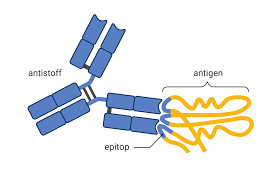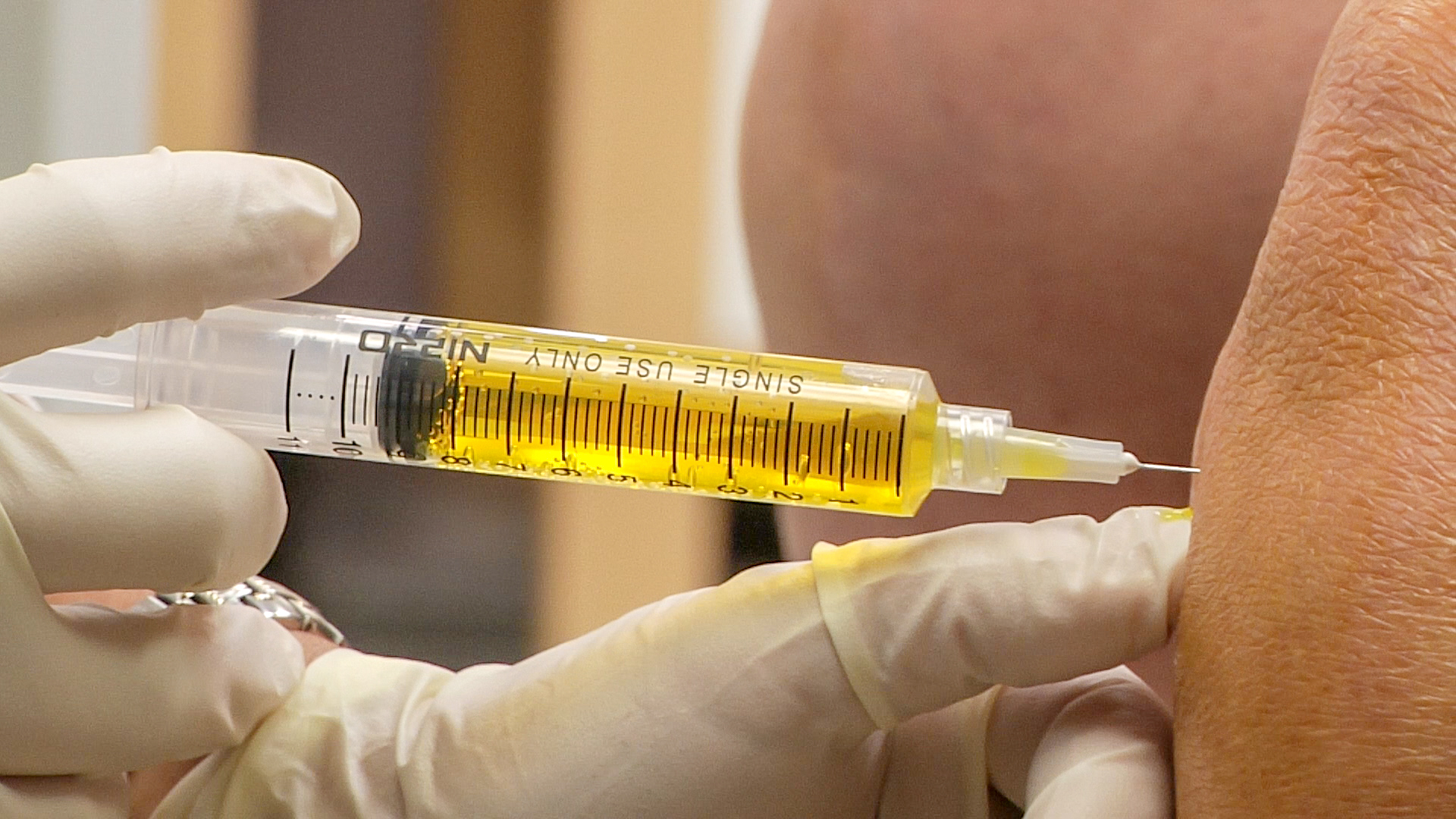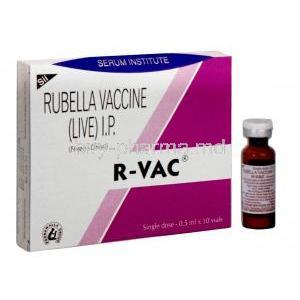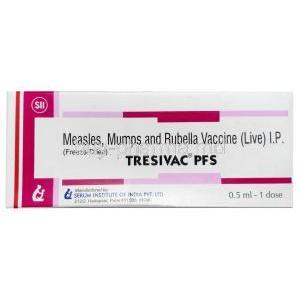Hiberix Injection
- I. Introduction to Hiberix Injection
- II. Uses of Hiberix Injection
- III. How Hiberix Injection Works
- IV. Composition of Hiberix Injection
- V. Dosage and Administration of Hiberix Injection
- VI. Side Effects of Hiberix Injection
- VII. Off-Label Uses of Hiberix Injection
- VIII. Interaction of Hiberix Injection with Other Vaccines and Medications
- IX. Warnings and Precautions
- X. Contraindications for Hiberix Injection
- XI. Careful Administration of Hiberix Injection
- XII. Important Precautions in Specific Populations
- XIII. Overdosage of Hiberix Injection
- XIV. Storage and Handling of Hiberix Injection
- XV. Handling Precautions for Healthcare Providers
I. Introduction to Hiberix Injection
Overview of Hiberix Vaccine:
The Hiberix vaccine is made to protect against illnesses caused by Haemophilus influenzae type B (HiB), a bacterium that can cause conditions like meningitis and pneumonia in babies and young kids.
Importance in Preventing Haemophilus Influenzae Type B (Hib):
If a Hib infection is not treated promptly and effectively, it can lead to illness and even death among those affected by it. Including the Hiberix vaccine in immunization programs has significantly reduced the number of these infections globally. By stimulating the body's response, this vaccine safeguards vulnerable groups from harm.

FDA Approval and Historical Background:
After undergoing trials to prove its effectiveness and safety standards, to the FDA's satisfaction, the approval of Hiberix marked a significant milestone in global pediatric immunization efforts. Its journey from development to use signifies a breakthrough in public health, playing a vital role in reducing the impact of Hib-related illnesses on communities worldwide.
II. Uses of Hiberix Injection
Primary Use: Prevention of Haemophilus Influenzae Type B:
Recommended Patient Population:
According to recommendations, both young children starting at 2 months old and adults in high-risk groups can benefit from using the Hiberix vaccine.It is specially designed for use and can also be used by older individuals in specific categories.
Off-Label Uses of Hiberix Injection:
Though its main use is in pediatric populations, Hiberix has also been explored for off-label uses, including in immunocompromised individuals who may benefit from additional protection against invasive bacterial infections.
- Potential Research and Experimental Uses: Hiberix has been part of ongoing research exploring its efficacy in novel populations and in combination with other immunization strategies.
- Use in High-Risk Populations: There is a potential benefit in administering Hiberix to adults, particularly those with compromised immune systems, such as patients undergoing chemotherapy or those with HIV/AIDS.
III. How Hiberix Injection Works
Mechanism of Action: Immune Response to Hib:
Hiberix operates by activating the body's system to identify and combat Haemophilus influenzae type B virus effectively. Understood as an antigen extracted from the bacterium, the vaccine triggers the immune system to generate protective antibodies without inducing any illness.
Antibody Development and Long-Term Immunity:
After receiving the Hiberix vaccine dose, your body reacts by producing antibodies that fight against the Hib bacteria. These antibodies stay in your system for a time, lowering your chances of getting infected even many years after getting vaccinated. Additional booster shots are given to keep this protection solid and effective as time goes by.
Duration of Protection and Booster Shots:
The shield provided by the Hiberix vaccine can safeguard individuals for years before they need a booster shot to maintain immunity levels high in populations or areas with a persistent Hib presence.
IV. Composition of Hiberix Injection
Active Ingredients: Overview of Hib Antigen:
Hiberix contains a purified polysaccharide antigen derived from Haemophilus influenzae type B linked to a protein carrier that boosts the system in kids.

Inactive Ingredients and Stabilizers:
Hiberix includes not the Hib antigen but also inactive components, like aluminum hydroxide to boost responses as an adjuvant and stabilizers to preserve the vaccines effectiveness when stored or transported.
Formulation and Vaccine Delivery System:
The Hiberix vaccine comes in a freeze-dried powder form that needs to be mixed with a solvent before it can be injected into the muscle. This ensures that it remains stable and easy to administer in environments.
V. Dosage and Administration of Hiberix Injection
Recommended Dosage Schedule in Infants and Children:
The suggested timetable for Hiberix involves a series of three shots commencing at 2 months old and then a supplementary dose usually administered between the ages of 12 and 15 months.

Hiberix vaccine schedule
The HIBERIX vaccine is given in four doses: a primary series of three doses at 2 months, 4 months, and 6 months, followed by a booster shot at 15 to 18 months old; the initial dose can be given as early as 6 weeks old.
Timing of Booster Shots:
Ensuring the child receives the booster shot is important to keeping their immunity strong in the long run as they grow and encounter germs in diverse settings.
Route of Administration (Intramuscular Injection):
The vaccine Hiberix is given through a shot into the muscle either in the thigh or upper arm, depending on the patient's age, for absorption and immune protection. Healthcare providers must adhere to practices when giving the vaccine to prevent contamination and safeguard patient well-being.

VI. Side Effects of Hiberix Injection
Common Side Effects:
Common side effects of Hiberix are usually mild and temporary, such as:
- Feeling redness or swelling and experiencing pain where the injection was given.
- Feeling feverish
- Children displaying signs of irritability
Serious Side Effects and Adverse Reactions:
While rare, serious side effects may occur, and these require immediate medical attention.
- Severe Allergic Reactions (Anaphylaxis): Symptoms such as difficulty breathing, swelling of the face or throat, and hives can indicate a severe allergic response.
- Rare Neurological Reactions: In extremely rare cases, neurological symptoms may present, necessitating further investigation.
Long-Term Side Effects and Monitoring:
It's crucial to keep an eye on any long lasting impacts and risks, in groups at higher risk levels when it comes to vaccination efforts because usually the advantages of getting vaccinated are much greater, than the downsides.
VII. Off-Label Uses of Hiberix Injection
Potential Use in Older Adults and Special Populations:
While its main target is childrens health care, needs Hiberix has also been, under consideration for administration, to individuals who face a susceptibility to Hib infection.
Investigational Uses in Countries with Different Vaccine Guidelines:
Continuing research is being conducted to investigate the effectiveness of Hiberix in areas with high rates of Hib infections by adapting dosage and administration methods to suit the epidemiological conditions in each locality.
Use in Combination with Other Vaccines:
Hiberix is often paired with vaccines given to children, like DTap and IPV to make the vaccination process more efficient and effective, in ensuring compliance and coverage rates are met.
VIII. Interaction of Hiberix Injection with Other Vaccines and Medications
Interaction with Other Pediatric Vaccines (e.g., DTaP, IPV):
Hiberix can be administered concurrently with other vaccines, such as diphtheria, tetanus, and pertussis (DTaP), or inactivated poliovirus vaccine (IPV), without compromising efficacy.
Co-administration Guidelines:
When giving more than one vaccine at a time, it is important to inject them in different places to reduce the chances of reactions in those areas. Using Hiberix with vaccines does not affect the body's response to them.
Potential Drug Interactions with Immunosuppressive Therapy:
Patients with weakened systems, such as those receiving chemotherapy or using corticosteroids, might not respond effectively to the Hiberix vaccination, so it's crucial for doctors to assess their immune status prior to administering the vaccine.
Effect of Antibiotics on Vaccine Efficacy:
In cases Hiberix is not affected by antibiotics, Yet if someone has an infection that needs antibiotics it might be better to wait for the vaccination until they get better..
IX. Warnings and Precautions
Allergies and Hypersensitivity to Vaccine Components:
If someone reacts badly to any part of the Hiberix vaccine or its ingredients, like the Hib antigen or stabilizers due to allergies they should not receive it because the reaction can vary from skin issues to severe anaphylaxis It's important to keep an eye on individuals, with allergy problems after they get vaccinated.
Immune System Disorders: Effectiveness in Immunocompromised Patients:
Patients with weakened systems, like those with HIV or receiving chemotherapy, might not respond strongly to the Hiberix vaccine compared to others without such conditions. Even though there is still some level of protection offered by the vaccine in these cases its effectiveness could be somewhat diminished in these groups. Healthcare professionals need to evaluate the patient's status and think about implementing extra precautions as needed.

Delay of Vaccination in Cases of Acute Illness or Fever:
It's advisable to delay vaccination for people dealing with a severe illness or fever since giving the vaccine during sickness might make it difficult to spot side effects or worsen the patient's condition in rare instances. The vaccination should be carried out as planned when the individual has fully recovered from their illness or fever.
Risk of Adverse Reactions in Patients with a History of Guillain-Barré Syndrome:
Guillain Barré syndrome (GBS), a condition that may be induced by vaccinations, is cautioned for individuals with a prior GBS history despite the minimal risk from Hiberix vaccine administration; it is recommended to promptly seek evaluation for any signs of muscle weakness or neurological symptoms post-vaccination.
X. Contraindications for Hiberix Injection
Absolute Contraindications (Severe Allergic Reactions to Vaccine Components):
Individuals who have a reaction background or experience anaphylaxis to any component of the vaccine should avoid receiving Hiberix as a precautionary measure against Haemophilus influenzae type B infection. Alternatives should be considered in such instances.
Relative Contraindications (Moderate or Severe Acute Illness):
When someone has a minor sickness, it typically should not stop them from getting vaccinated; however, if the illness is more serious or moderate in nature, it might be best to wait to get the vaccine for a bit until feeling better before proceeding with it. Further decisions should be made based on individual circumstances, weighing the risks of delaying against the chances of having negative effects during an illness.
XI. Careful Administration of Hiberix Injection
Administration to Children with Chronic Illnesses:
Children who have long-term illnesses such as asthma or diabetes should be carefully evaluated before getting the Hiberix vaccine to ensure their well-being and potential treatment interactions are taken into account while protecting them from Hib infections.
Considerations for Preterm Infants:
Preemies are at risk of catching infections because their immune systems are not fully developed yet; however, research indicates that giving Hiberix to preterm babies according to the recommended vaccination timetable is safe and beneficial for them overall.
Recommendations for Delayed Vaccination in Certain Scenarios:
In instances like when someone's undergoing treatment or facing serious illness, it may be recommended to postpone getting vaccinated. Timing plays a role in getting the most out of the vaccine's benefits and making sure the individual is in good health to react well to the vaccination. A healthcare provider should meticulously oversee situations.
XII. Important Precautions in Specific Populations
Administration to Elderly Patients: Efficacy and Safety Data:
While Hiberix is commonly administered to children and young individuals as the target group, there are instances where it could be deemed appropriate for use in patients with weakened immune systems or underlying health issues as well. Existing data indicate that older adults can potentially benefit from receiving the vaccine without concerns; however additional studies are required to establish its effectiveness, within this particular age group.
Administration to Pregnant and Nursing Mothers:
The safety of Hiberix in pregnant women has not been conclusively established, as clinical trials specifically involving this population are limited. However, the vaccine is not typically administered during pregnancy unless the potential benefits outweigh the risks. For nursing mothers, no adverse effects have been reported, and breastfeeding may even enhance the infant's immune response to the vaccine.
- Safety Profile During Pregnancy: If vaccination during pregnancy is deemed necessary, it should only occur after careful risk-benefit analysis. Although there is no direct evidence of harm, precautionary measures are advised.
- Recommendations for Breastfeeding Mothers: Lactating mothers receiving the Hiberix vaccine have not shown any detrimental effects on breastfeeding infants. The immune response from the mother could, in some cases, confer additional passive immunity to the infant.
Administration to Children with Specific Health Conditions:
Kids who have health issues, like system problems or organ transplants, need vaccination schedules tailored to their specific needs and risks of complications to ensure they're well protected against Hib after consulting closely with pediatric experts for thorough guidance.
XIII. Overdosage of Hiberix Injection
Signs and Symptoms of Overdose:
Vaccine overdoses are uncommon. Can happen in settings because of mistakes made by people taking care of patients. Symptoms of an overdose could be reactions near where the vaccine was given, like redness or swelling at the injection site, and other symptoms, like feeling hotter than normal or being tired or dizzy all over the body. If this happens to someone after getting a vaccine shot,its important to see a doctor away for help.
Emergency Management of Overdose:
Treatment for a vaccine overdose typically involves providing care to alleviate symptoms and monitoring the patient for any reactions without the availability of specific antidotes; administering proper care can help minimize any potential harm.
Reporting and Handling of Vaccine Overdose Cases:
If a vaccine dosage is missed, it's important to inform health departments and vaccine producers for proper monitoring and record keeping purposes. This can help avert similar incidents and enhance vaccination safety measures.
XIV. Storage and Handling of Hiberix Injection
Proper Storage Conditions (Temperature, Light Protection):
Remember to store Hiberix in a temperature range of 2°C to 8°C, as exposure to temperatures beyond this range may diminish the vaccine's effectiveness over time. Also, remember to shield the vaccine from light to maintain the integrity of its ingredients.
Shelf Life and Expiration Date Considerations:
If stored correctly on the shelf, Hiberix usually remains effective for two years. However, it is essential to dispose of the vaccine once it expires to ensure that it can no longer offer the intended protection.
Guidelines for Transport and Cold Chain Management:
When transporting the vaccine to locations, it is crucial to keep it at the right temperature to ensure it works effectively once it reaches the health centers.
XV. Handling Precautions for Healthcare Providers
Safe Disposal of Vaccine Materials:
When administering Hiberix vaccine doses to patients in healthcare settings, it is crucial for medical professionals to adhere to regulations for disposing of needles, syringes, and any remaining vaccine. This practice is essential to maintaining an environment that prevents contamination and minimizes the likelihood of infections or unintended injuries.
Prevention of Contamination During Administration:
It's important to follow cleanliness protocols while dealing with and giving the vaccine to avoid any contamination issues. This involves maintaining good hand hygiene practices and wearing gloves to ensure that the vaccine is used within the specified time frame after reconstitution.
Legal and Regulatory Compliance for Vaccination Record Keeping:
It's important to keep records of vaccinations to ensure that each person's immunization status is current and accurate, in accordance with regulatory standards. Ensuring compliance with regulations is crucial for monitoring health and overseeing vaccine safety, including reporting any effects that may occur.
Hiberix Injection FAQ
- Who makes hiberix?
- When was hiberix approved?
- What is hiberix?
- What does hiberix do for you?
- What is hiberix used for?
- What does hiberix protect against?
- What is hiberix vaccine used for?
- What is hiberix vaccine?
- How to mix hiberix?
- How to reconstitute hiberix?
- Can you give hiberix to adults?
- Can hiberix be given to adults?
Who makes hiberix?
GlaxoSmithKline Biologicals
When was hiberix approved?
Aug 20, 2009
What is hiberix?
Children aged between 6 weeks and 4 years can receive HIBERIX for protection against disease caused by Haemophilus influenzae type b.
What does hiberix do for you?
To protect against illnesses caused by Haemophilus influenzae type b, HIBERIX is recommended for children between 6 weeks and 4 years old (before their birthday).
What is hiberix used for?
The HIBERIX vaccine is recommended for immunizing children from 6 weeks old to their fourth birthday against illnesses linked to Haemophilus influenzae type b.
What does hiberix protect against?
To prevent Haemophilus influenzae type b (HiB) HIBERIX is administered within the 6 months of life starting at six weeks of age.
What is hiberix vaccine used for?
Children between 6 weeks and 4 years old can receive the HIBERIX vaccine to protect against illnesses caused by Haemophilus influenzae (commonly known as H.influenzae type b). This vaccine is recommended to prevent diseases in this age group before they reach their birthday.
What is hiberix vaccine?
Children between 6 weeks and 4 years old can receive HIBERIX for protection against diseases caused by Haemophilus influenzae type b.
How to mix hiberix?
The HIBERIX vaccine is given in four doses over a period of time; three initial doses are administered at 2 months old and again at 4 and 6 months old.
How to reconstitute hiberix?
Ensure to clean both stoppers on the vials before proceeding. Next carefully add 0.mL of Sterile Saline Diluent into the Lyophilized Antigen Component vial. Shake it thoroughly until the powder dissolves completely. After reconstitution is done, draw 0. mL of the reconstituted vaccine into the syringe. Administer it intramuscularly.
Can you give hiberix to adults?
Children under the age of 5 face the risk of getting infected, and the effective way to prevent this serious illness is through vaccination, which stimulates the body to create its own defense mechanism known as antibodies. Vaccinations are typically not administered to children older than 4 or adults.
Can hiberix be given to adults?
It is advised not to administer Hiberix to individuals aged 6 and above as its effects on women or those who are breastfeeding are currently unknown.



